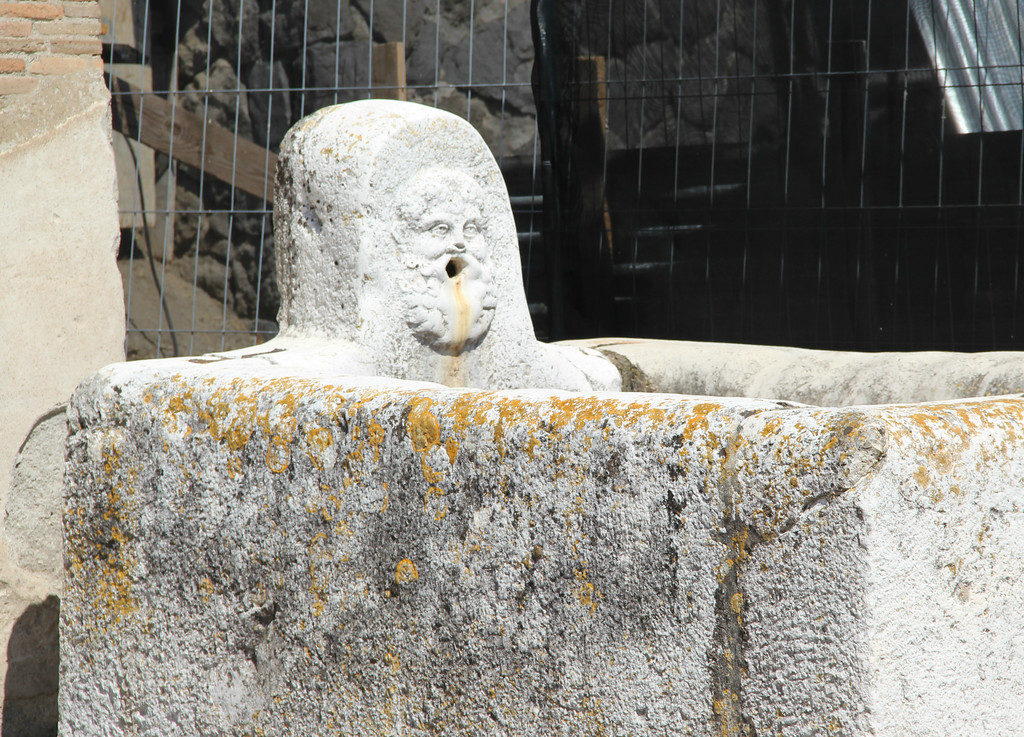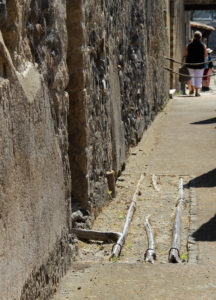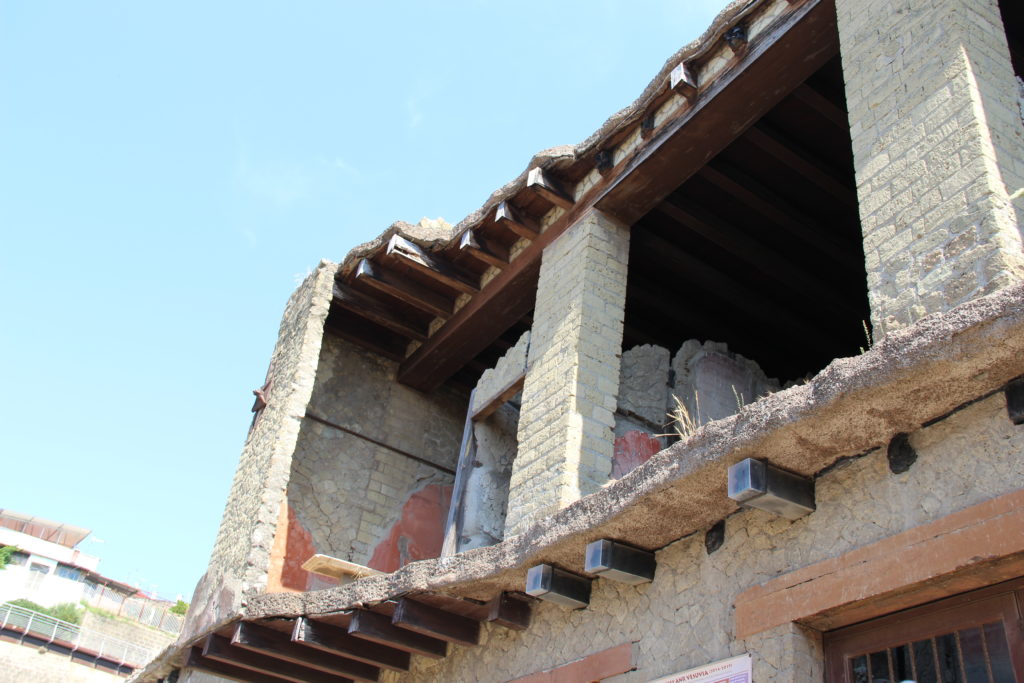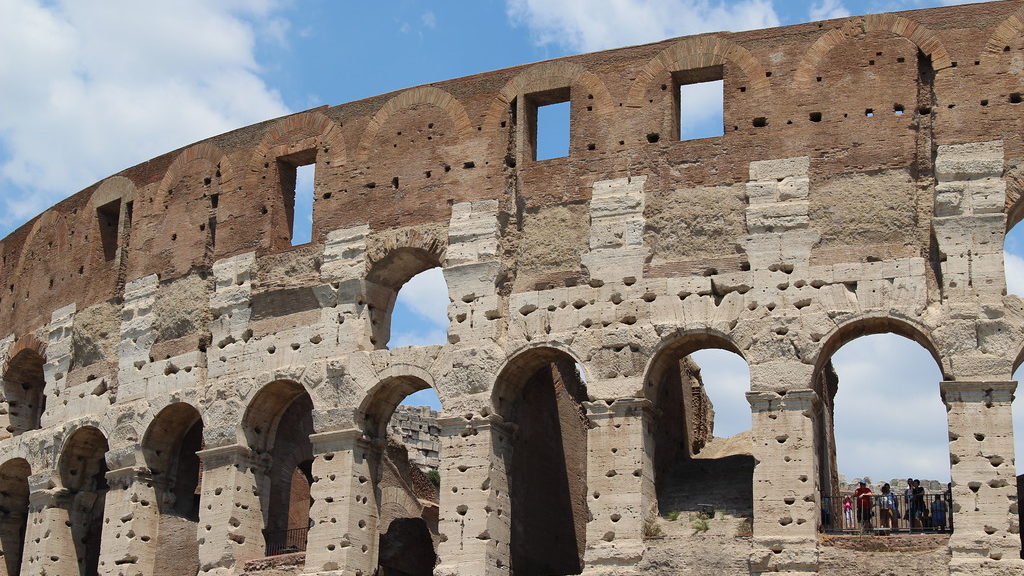
Rome Sites, The Colosseum and Herculaneum
This post will include some other sites in Rome from our Rome, Amalfi Coast, Sicily and Malta tour. The places in this section were not stops on our tour, but they are ones we saw while traveling around Rome. The first picture depicts the ruins of the Stadium of Emperor Domitian. The stadium included a running track. It is not known if the public was ever allowed on the grounds of the Stadium. The Circus Maximus would have been in front of the Stadium in my picture. The Circus Maximus was a large amphitheater designed for chariot racing. It is estimated that it could once hold 250,000 spectators. Now it is mostly a grassy area with just a few bleachers remaining.
The next pictures are of the Castel Sant’ Angelo and the Ponte Sant’Angelo which crosses the Tiber River, connecting the castle with Rome. The Castel Sant’ Angelo was originally built as a mausoleum and constructed between 123AD and 139AD. At that time it was known as Hadrian’s Mausoleum. From the early 270’s and for many years to come, the building was fortified. It was acquired by the papacy in 1277 to be used as protection in case of an attack. The Castel Sant’ Angelo was connected to the Vatican with a tunnel and was actually used for this purpose in 1527. Today the castle serves as a museum. Construction of the Ponte Sant’ Angelo (bridge) began in 136AD. The three central arches of the bridge are original while the arches at either end of the bridge have been added. In 1668, Bernini designed the ten angels that are mounted on the bridge. Each holds something connected to Christ’s crucifixion.
The last picture is of the Obelisk of Thothmes IV which is located in the Piazza S. Giovanni in Laterano. I know it is not a very good picture of the obelisk – I have blurred the outer portions of the picture to help bring focus to the obelisk. What is remarkable to me is its history/age and that is why I am referencing it in this post. The obelisk was originally erected by the Pharaoh Thothmes IV who was the pharaoh in Egypt in the 14th Century BC. It was brought to the Circus Maximus in in 357AD. In 1588, it was moved to the Piazza S. Giovanni. To see something that dates back before Christ is simply amazing.
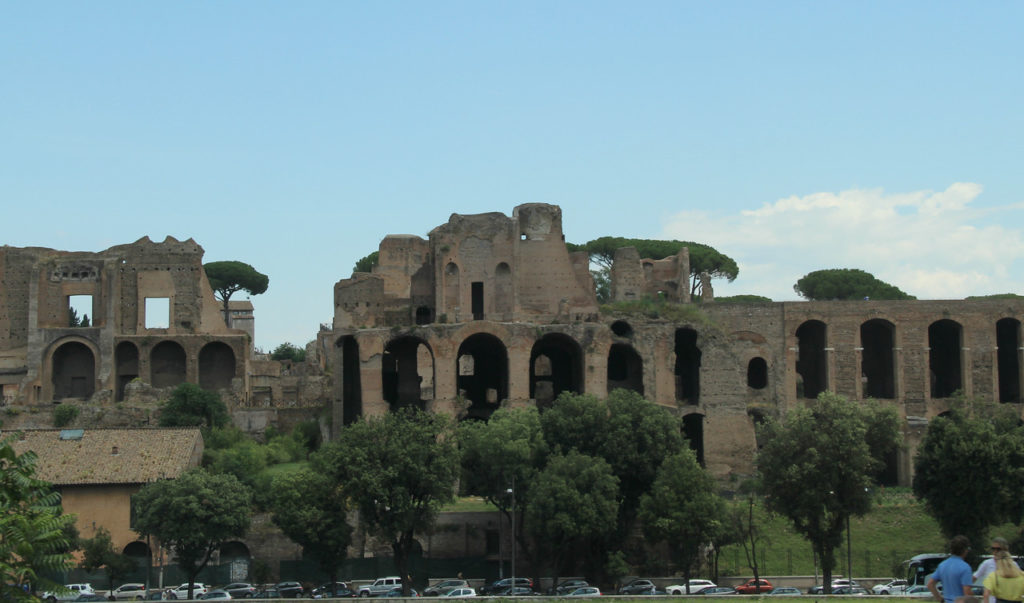
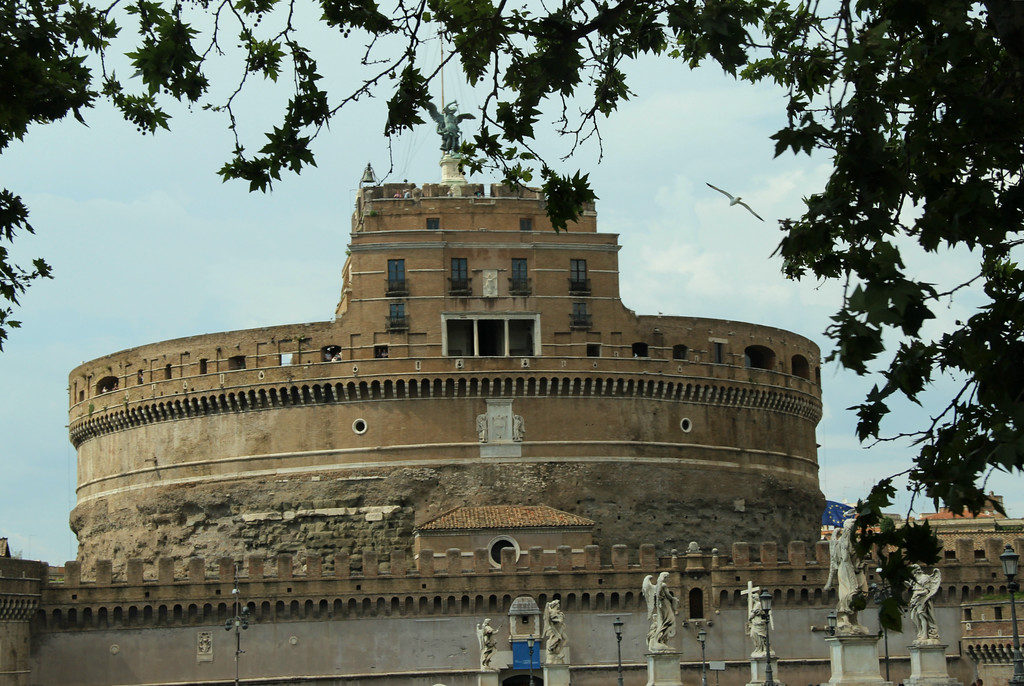
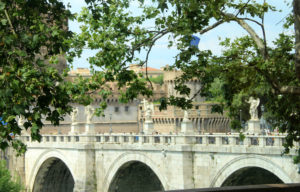
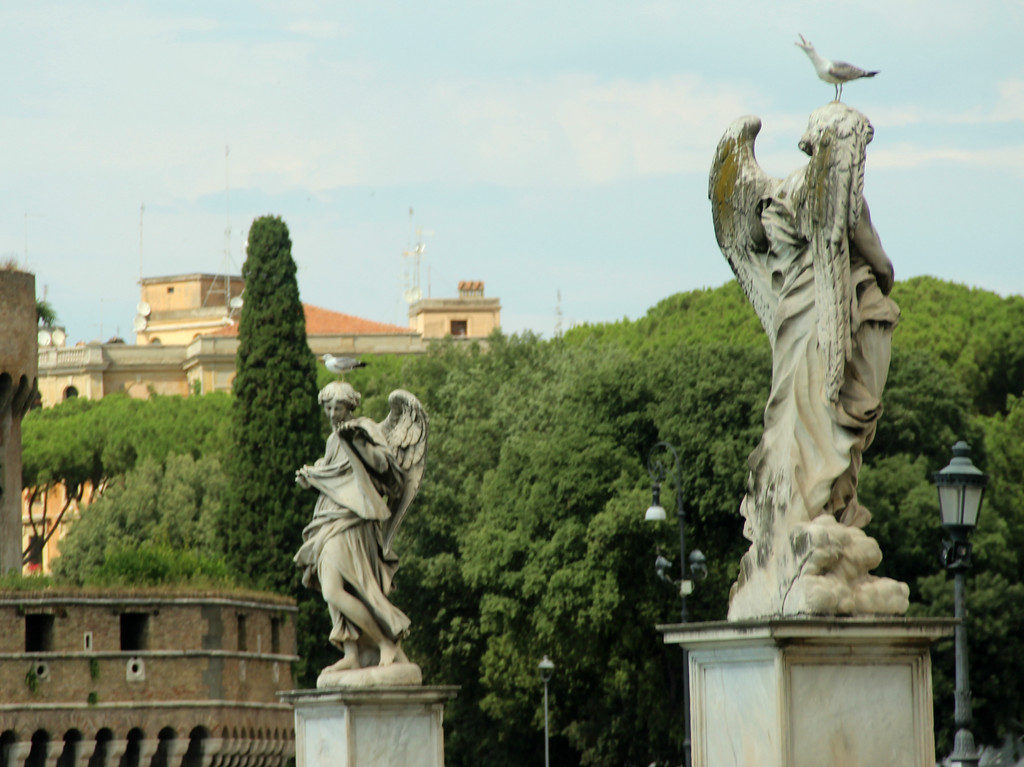
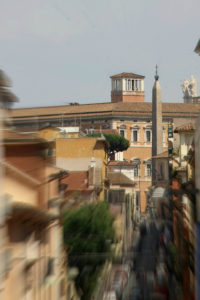
We walked to the Spanish Steps which are shown in the first picture below. It is a great place for people watching. The 135 steps were completed in 1725 and connect the Piazza di Spagna with the church of the Santissima Trinità dei Monti. The square and steps were named because of their proximity to the Spanish Embassy to the Holy See. There is a fountain in the square which is named “Fountain of the Old Boat.” The statue is said to be a monument to the flood of the Tiber River occurring around Christmas, 1598. The entire city was pretty much flooded so boats were needed to move about Rome. After the waters receded, a boat was left in the square – thus this statue.

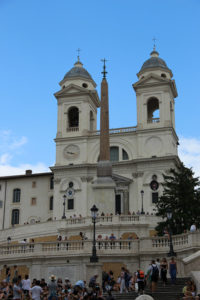
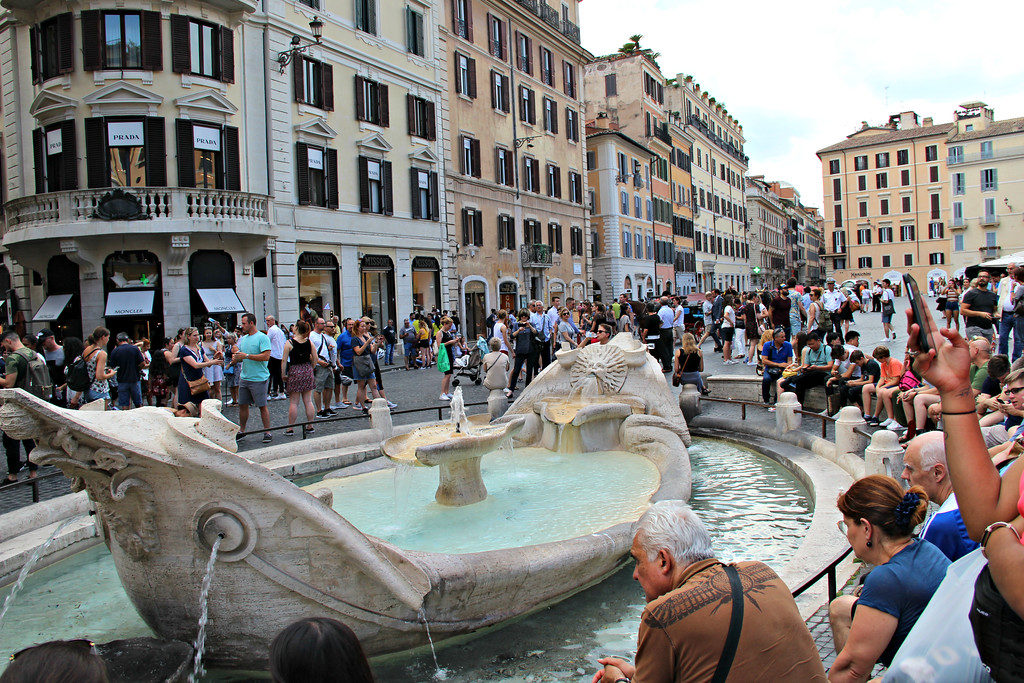
We also visited one of Rome’s landmarks, the Colosseum. Just adjacent to the Colosseum is the Arch of Constantine, the first picture below. It is a triumphal arch, erected in 315 AD to commemorate Roman Emperor Constantine’s victory over another emperor, Maxentius, at the Milvian Bridge. His victory led to Constantine I being the sole ruler of the Roman Empire. The arch is made of marble and actually consists of three arches – a larger one in the middle and then a smaller one on either side. These are separated by columns, also made of marble. The decorative work on much of the arch was actually reused from monuments originally created between 98AD and 130AD.
You will also see an exterior picture of the Roman Colosseum which was completed in 80AD. It was a gift to the Roman people and at that time, the Colosseum was known as the Flavian Amphitheater. Many amphitheaters were built into the side of hills for additional support; this one is unusual for its time because it is a freestanding structure. The amphitheater could seat 50,000 people and similar to some of today’s major league baseball fields, had a retractable awning that could shield people from the sun. It featured contests between gladiators, between men and animals and even mock naval battles. Some say Christians were executed here, but other sources say this is not certain.
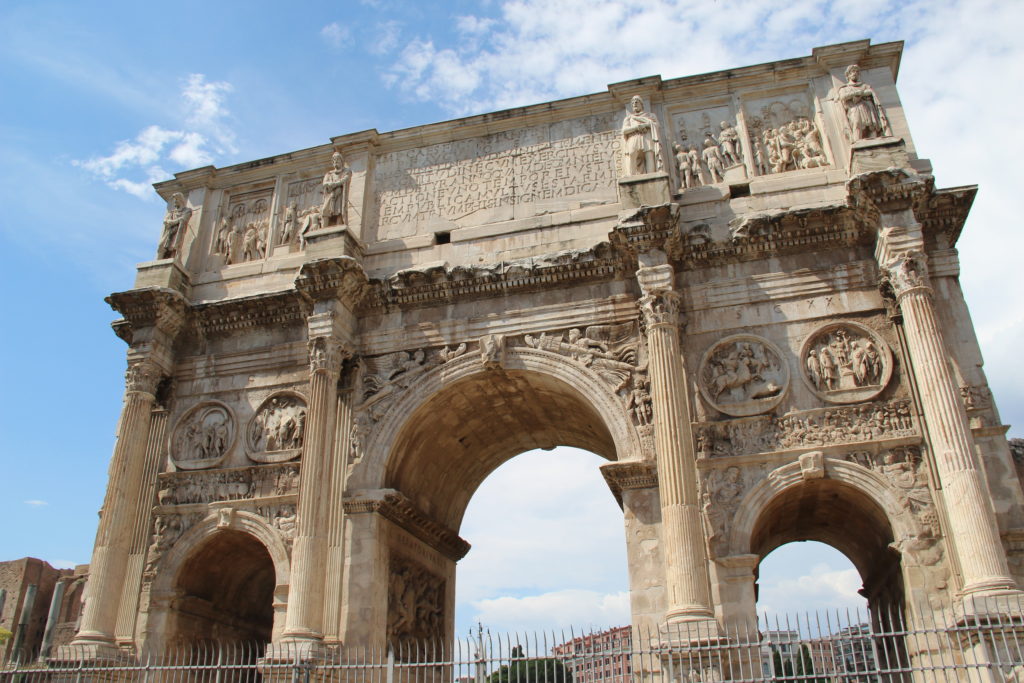

We were able to spend some time on a wooden reconstruction of the Colosseum’s original arena floor. From here we could look down into the Colosseum’s hypogeum where underground tunnels, passageways and rooms are located. It was here that gladiators might wait for their fight or where caged animals were kept. There were lifts which utilized ropes and pulleys that could raise animals to the arena floor through trap doors. Looking up, we could also imagine the thousands of spectators that would have been seated to watch the contests. If you look carefully, you will see people on the other side of the Colosseum. This will give you some reference as to the Colosseum’s huge size.
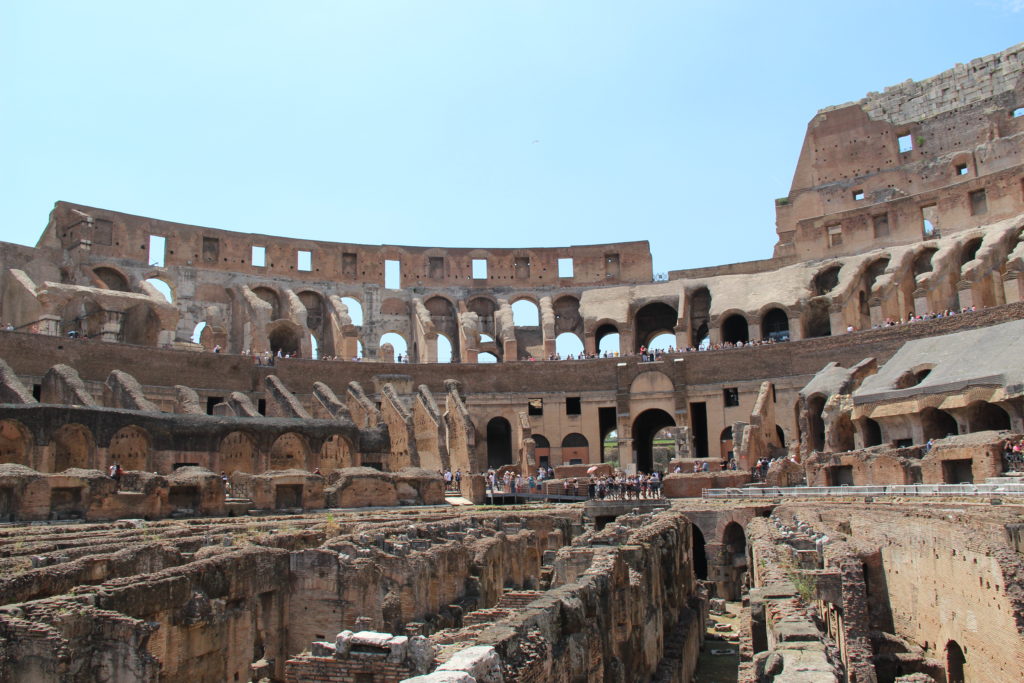
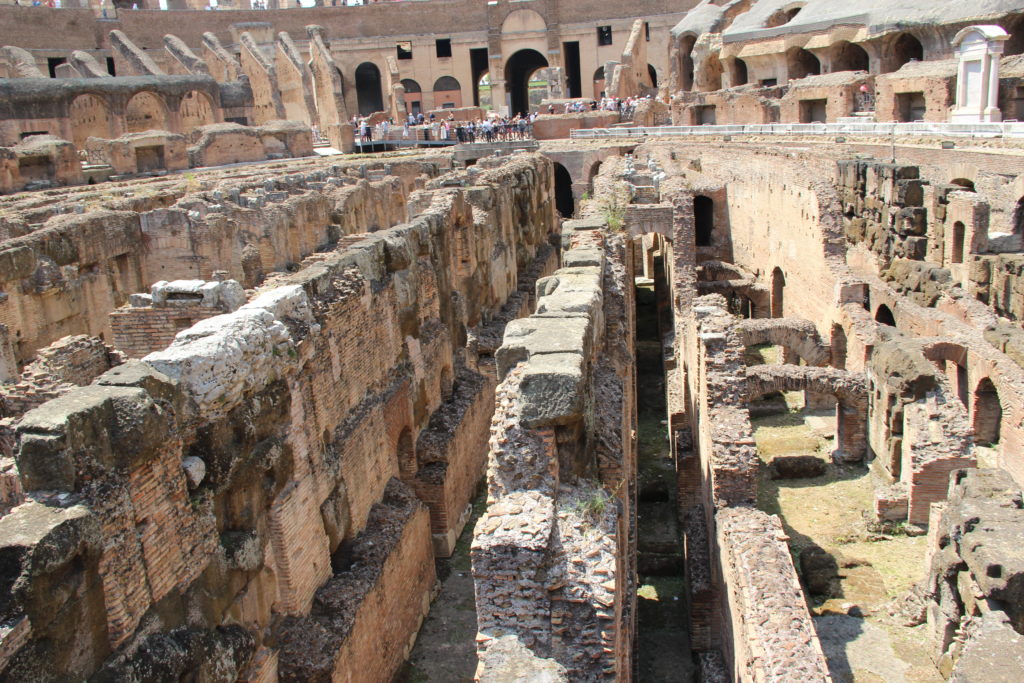

The Colosseum is built of travertine stone. The Colosseum is an oval, approximately 615 feet long and 510 feet wide. It is 157 feet high comprising four levels. People were to assigned these levels according to their social status and wealth. Senators, government officials and important priests sat closest to the arena floor (which was tier one). Those in tier two were not as important as the senators, but they were still part of the noble class. Tier three was for the common Roman citizen and tier four was for “common women.” Although events were free, those attending an event were given a “ticket,” which specified an entrance number, row and specific seat. They would enter through one of 76 entrance arches, each numbered according to the sections served by the entrance. In the last picture, you can see some of the numbers on the seats.
The Colosseum was used for about four thousand years and then fell into disarray until the 18th Century. During this time, it suffered damage from lightening, earthquakes and looting. Much of the stone and marble was removed for use in other structures including St. Peter’s Basilica. A preservation effort was undertaken in the 19th Century. Although almost 2/3 of the Colosseum was destroyed, today it is the second most popular tourist site in Rome, second only to St. Peter’s Basilica.
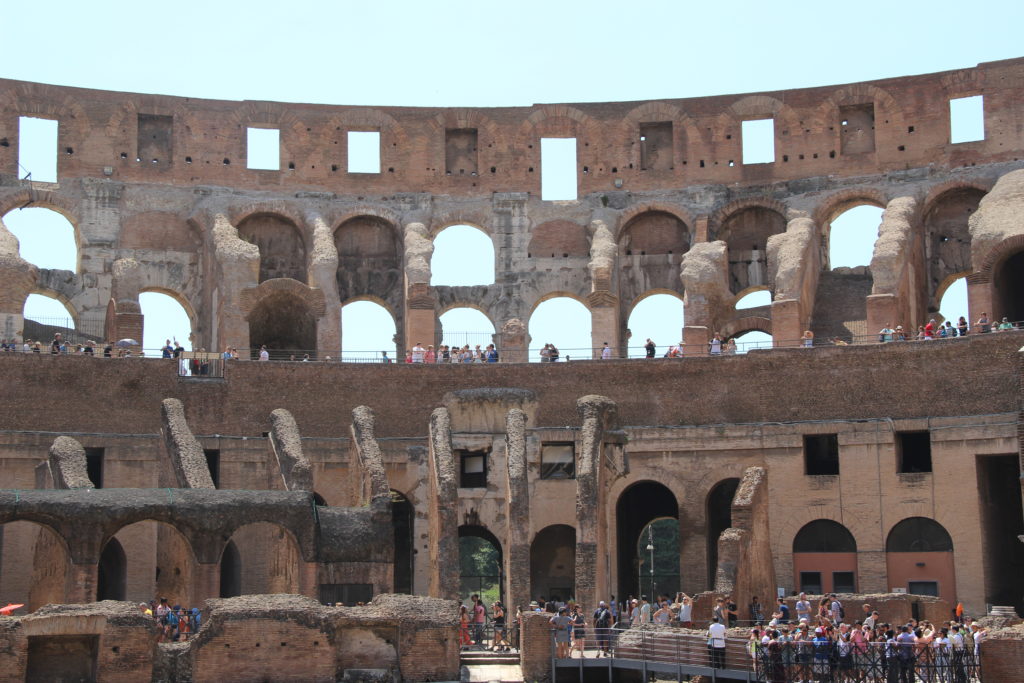

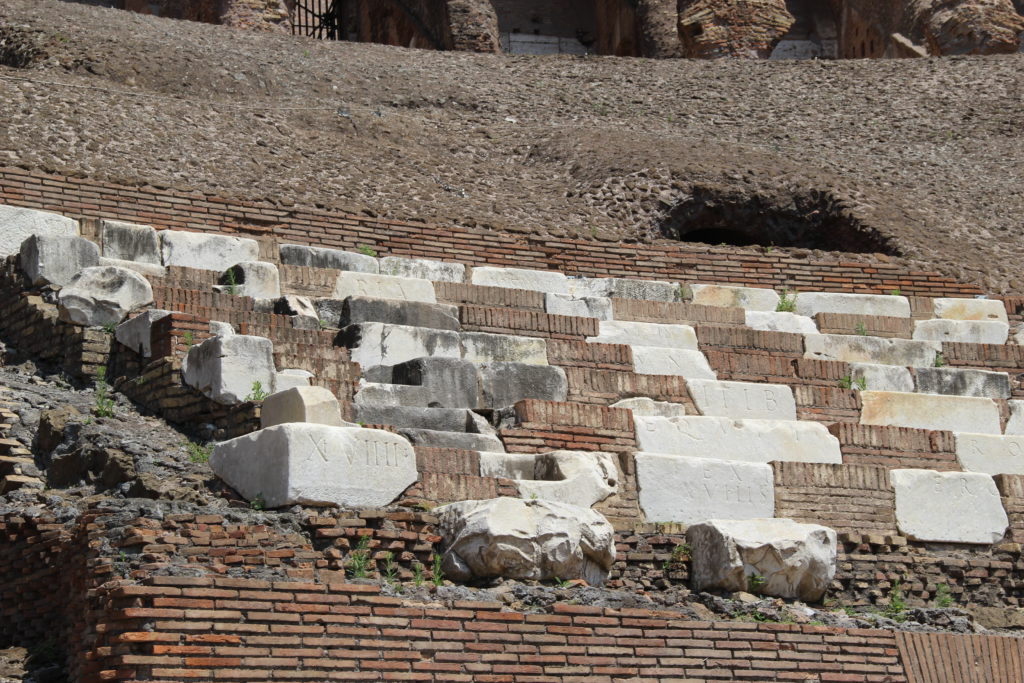
From Rome, we traveled to Herculaneum, a lesser known city that was caught in time because of the eruption of Mt. Vesuvius in August of 79AD. When we did our Classic Italy tour, we visited Pompeii. If you would like to read that post, you will find it at https://sharingtravelmemories.com/pompeii/ . In writing this post, I relied on information from our local guide, various websites and a YouTube video entitled, “The Other Pompeii: Life and Death in Herculaneum,” which featured Professor Andrew Wallace-Hadrill. As way of introduction, Mt. Vesuvius affected Pompeii much differently than Herculaneum. In Pompeii, because of the wind, the city was covered with approximately 16 feet of ash and pumice. The falling debris collapsed roofs. In Herculaneum, 50 to 60 feet of ash covered the city, but from the bottom up so roofs did not collapse. People died instantly as a result of pyroclastic flows which caused intense heat. In addition to killing the people who lived in Herculaneum, this heat also carbonized wood and organic matter. It is a unique research opportunity and literally captured Herculaneum at that moment in time.
We first looked at Herculaneum from above as seen in the picture below. The grassy area was once the sea. Following the eruption of Mt. Vesuvius the area was filled with lava which formed new ground – the sea moved out over 1,000 feet. In the YouTube video, Professor Wallace-Hadrill said that many skeletons of women and children were found in the vaults (with curved entrances) and the skeletons of men were on what was then the shore. He indicated that the shelters where women and children were found were probably a place of refuge during earthquakes, many of which would have preceded the eruption of Mt. Vesuvius. Of course it did little to help save the people from the effects of Mt. Vesuvius’ eruption.

The next pictures are of one of the homes, The House of the Wooden Screen. In the center of the first picture is an “impluvium,” a sunken area designed to catch rainwater from a hole in the ceiling above. The bench near the impluvium is original. To the side is a bedroom (see second picture). The wooden frame of the bed survived. The wooden doors in the third picture (now protected with glass) also survived. The doors could be opened to greet guests or closed for private dining.
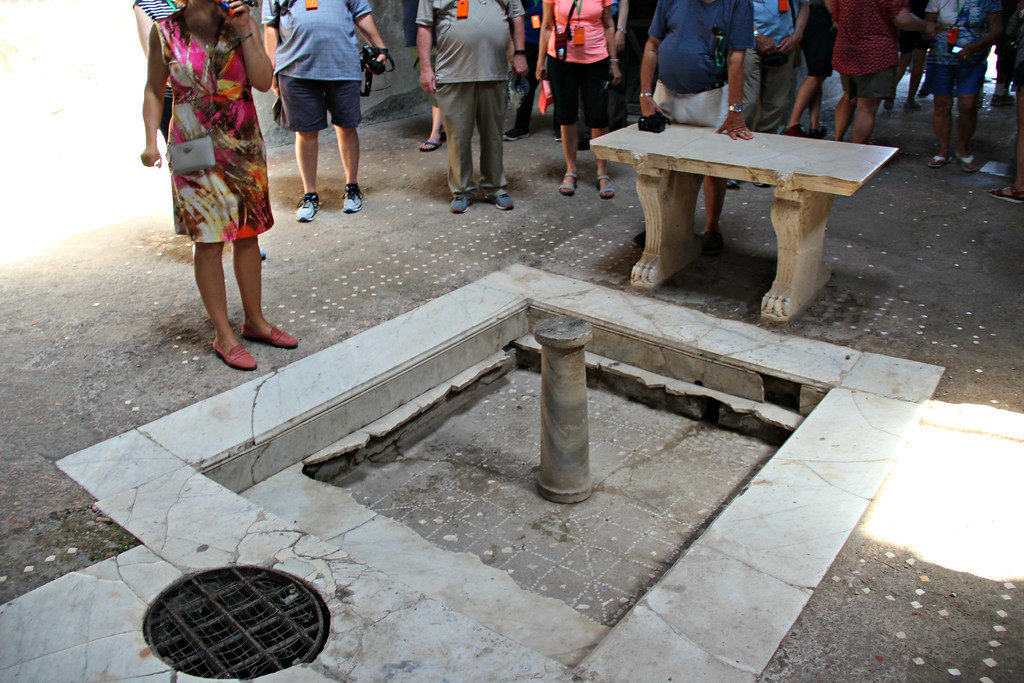


The next pictures are of the Central Baths for Women. The first two pictures show the apodyterium or changing room. There was a beautiful mosaic on the floor, with a bench on which women could sit and shelves for their clothes. The next picture is of the tepidarium. There were pipes in the walls to warm the room with hot air. The basin on the lower left was for washing feet. The last picture is of the caldarium or hot room. The labrum (like a tub) would have held water. The circular ceiling enabled condensation to roll down the sides of the ceiling rather than falling directing on the women.
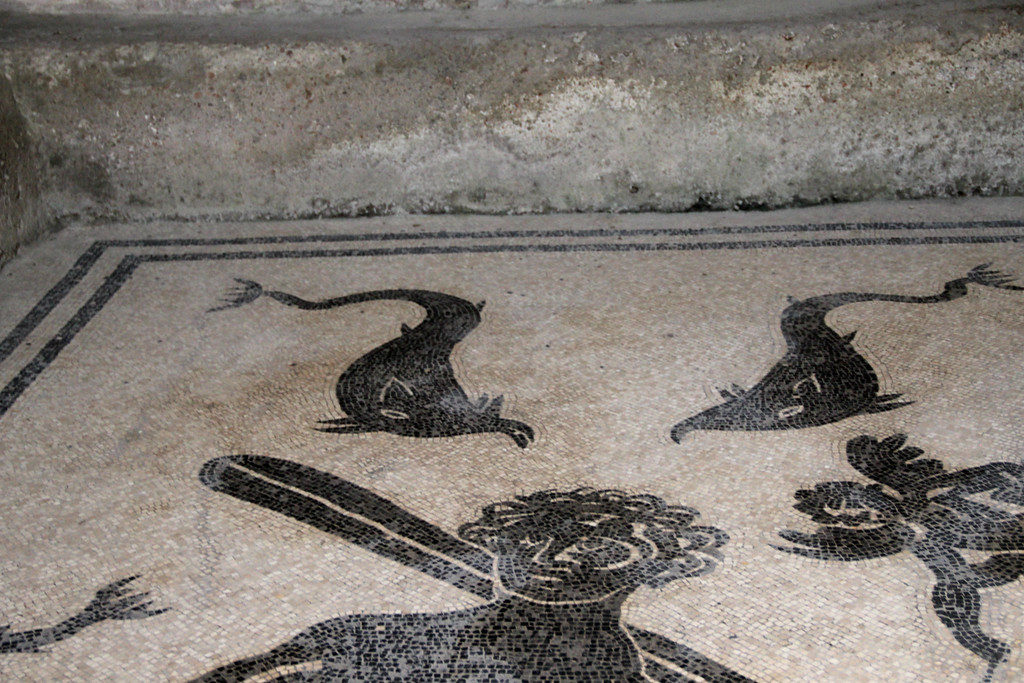

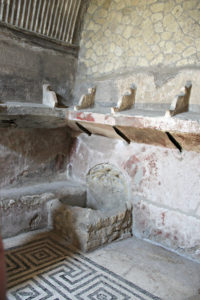
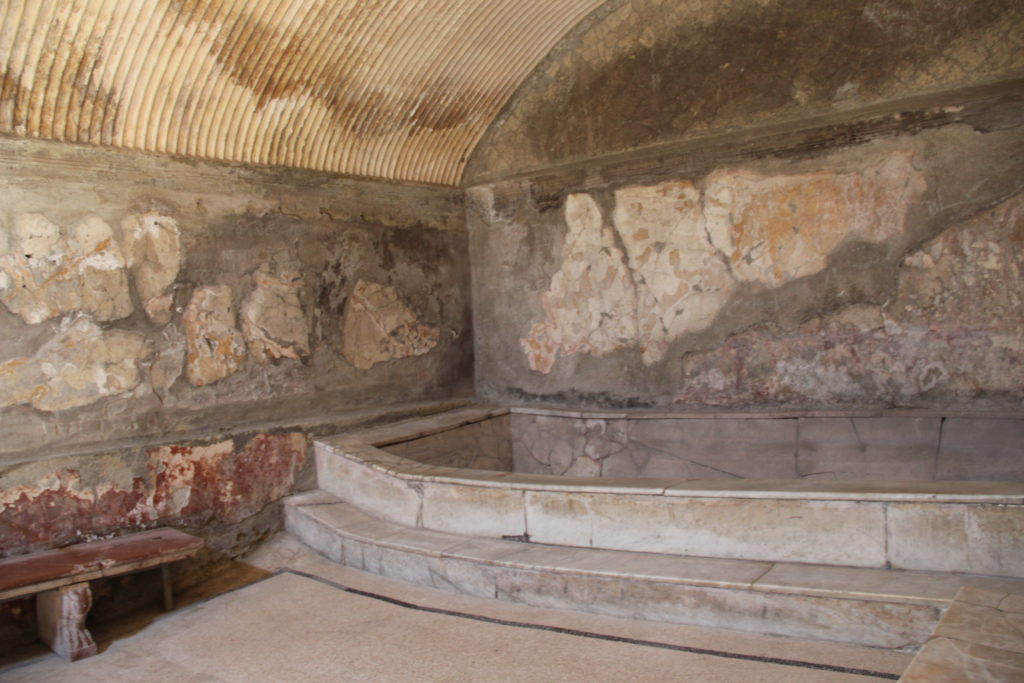
Generally, Herculaneum was a more upscale town than was Pompeii. This is very evident in another home called the House of Neptune and Amphitrite. The beautiful mosaics are original (though restored) and were in the dining room.

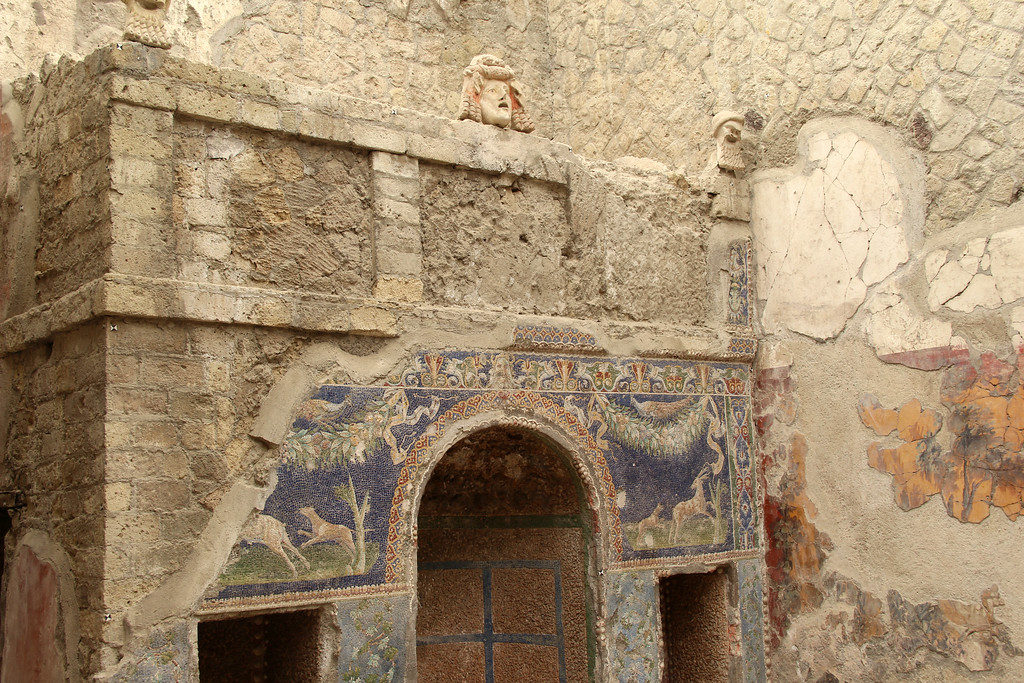
As we walked the streets of Herculaneum, we saw a fountain (first picture below) that would give all residents access to a source of water. The fountains were decorated differently and also served as a way to identify the different intersections in the town. The second picture shows exposed pipes. These would provided fresh water right to the homes of some of the residents. The third picture shows a second floor in one of the buildings. Notice that the wood holding up the second floor survived. In some cases homes had two floors. In others, a store might be on the first floor and the home on the second. The next pictures shows a sign outside a wine shop. The sign advertises the prices of different wines. The last picture is of a thermopolium which is like a fast food restaurant where food can be carried out. Thermopolium means “a place where something hot is sold.”
Herculaneum isn’t as well-known nor as large as Pompeii. I am glad we have seen them both. Herculaneum, because it is smaller, is an easier visit. The frescoes in Pompeii were very faint, but in Herculaneum, it is easy to see that everything is better preserved. The mosaics were especially beautiful. There is much more to be excavated, but currently there are no further excavations in progress. The focus is on protecting what has already been revealed – that seems like a very sound decision.
